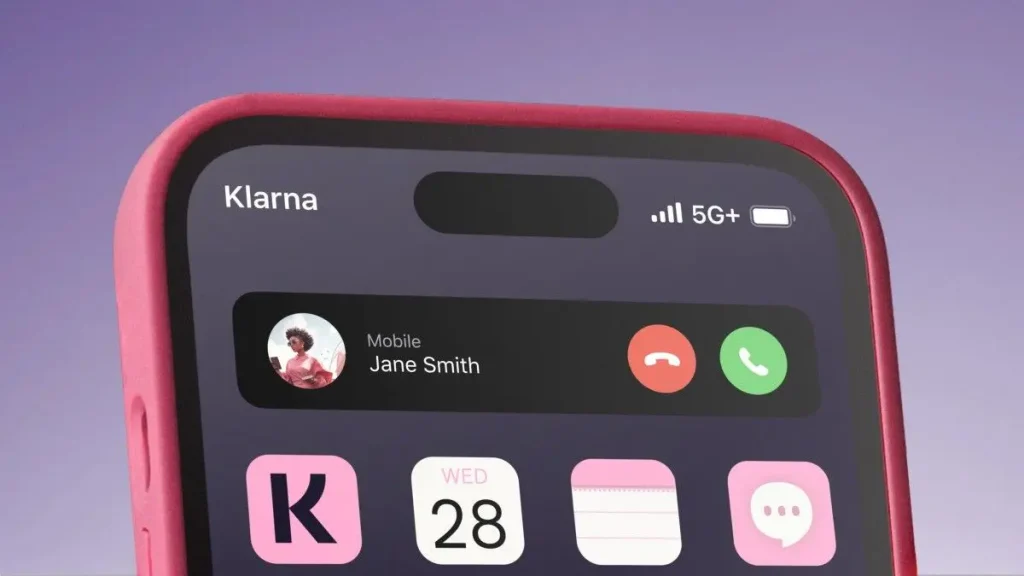Swedish fintech company Klarna, renowned for its buy-now-pay-later services, is making a significant move into the U.S. mobile market. In the coming weeks, Klarna will launch an unlimited mobile phone plan priced at $40 per month, offering consumers a seamless and hassle-free experience directly through the Klarna app.
Klarna’s Entry into Mobile Providers
Klarna, known for its buy‑now‑pay‑later services, is entering the U.S. mobile virtual network operator (MVNO) market with a $40/month unlimited 5G plan. Launching via its app in the coming weeks, the plan offers unlimited talk, text, and high-speed data on AT&T’s nationwide network.
This move places Klarna alongside fellow fintech firms like Revolut, N26, and Nubank in diversifying into telecom services — a trend gaining traction as companies reimagine the boundaries of digital banking.
Why a Fintech‑Powered MVNO?
-
Ecosystem expansion: Sebastian Siemiatkowski, Klarna’s CEO, calls mobile connectivity “a natural next step” in its neobank evolution.
-
Built on trust: With over 25 million U.S. users and a stellar Net Promoter Score (81), Klarna can seamlessly introduce telecom services through its existing financial app.
-
Recurring revenue stream: Monthly mobile subscriptions offer stability compared to the project-based revenue of BNPL, aligning with Klarna’s long-term growth plans.
Powered by Gigs + AT&T
Klarna’s MVNO launch is enabled by Gigs, a startup backed by Google that equips brands to offer mobile services via a Layer‑2 solution. Gigs partners with AT&T’s infrastructure, allowing Klarna to package unlimited 5G connectivity without managing its own physical network.
Hermann Frank, Gigs’ co‑founder, calls this a “radically better experience for US consumers”, emphasizing streamlined app-based activation, eSIM setup, and no hidden fees.
What Can You Get From Klarna’s $40 Mobile Plan
-
Unlimited high-speed 5G data, calls, and texts
-
Nationwide coverage on AT&T’s network
-
Instant activation and easy switching in-app
-
eSIM support, number porting, and no contracts
-
No activation or cancellation fees
-
Fully managed through Klarna’s existing user interface
Premium and international mobile plans are expected later this year, with U.K., German, and other market expansions on the roadmap.
Market Reaction: A Gamble with Strong Upside
-
MVNO market growth: Research forecasts the U.S. MVNO market to grow from $14.8 billion in 2025 to $20.8 billion in 2030.
-
Industry buzz: Analysts expect intensified competition as fintech brands enter telecom. But success will depend on execution and retention.
-
Competitive edge: Klarna’s strong brand, seamless app integration, and no-contract model differentiate it from legacy MVNOs like Mint Mobile and Xfinity Mobile.
Risks and Considerations
-
Margin pressure: MVNO margins are thin; Klarna will need scale and operational efficiency to sustain profitability.
-
Service quality dependency: Since AT&T provides network infrastructure, Klarna’s customer experience will depend heavily on that relationship.
-
Regulatory oversight: Climbing telecom and BNPL regulatory scrutiny means Klarna must navigate compliance carefully as it expands into financial services.
From BNPL to Neobank
Klarna’s phone plan is part of a broader strategy to evolve from BNPL into a full-service neobank. Recent moves — like piloting a Visa debit card — show its intent to expand payments, banking, and now connectivity services.
By anchoring multiple recurring services in its app, Klarna aims to increase customer engagement and lifetime value — positioning itself to compete with digital-first challengers like Chime and Revolut .
So What’s Next?
-
Rollouts: U.S. launch in the coming weeks, followed by U.K. and Germany later this year.
-
Plan expansion: Premium and international tiers are expected ahead of broader rollout.
-
IPO drive: Klarna’s differentiation in fintech and telecom could boost investor confidence in its expected 2025 IPO, potentially worth $12–15 billion gigs.comainvest.com.
Klarna’s entry into the U.S. mobile market underscores fintech’s evolving role in consumer services. Bundling unlimited 5G mobile connectivity for $40/month—seamlessly integrated into its app—illustrates a bold push toward full-stack financial and lifestyle services. Execution will prove key, but this move could reshape how consumers experience banking and telecom together.


